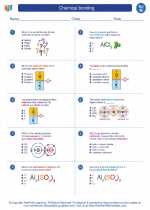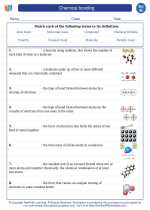Chemical bonding -> newton's laws of motion
Newton's Laws of Motion
Newton's laws of motion are three fundamental principles that describe the behavior of objects in motion. These laws were formulated by Sir Isaac Newton in the 17th century and laid the foundation for classical mechanics.
First Law: Law of Inertia
The first law states that an object at rest will stay at rest, and an object in motion will stay in motion with the same speed and in the same direction unless acted upon by an unbalanced force. In other words, objects tend to resist changes in their motion.
Second Law: Law of Acceleration
The second law mathematically describes the relationship between the force acting on an object, its mass, and its acceleration. It is expressed as F = ma, where F is the force applied, m is the mass of the object, and a is the acceleration produced.
Third Law: Law of Action and Reaction
The third law states that for every action, there is an equal and opposite reaction. When one object exerts a force on a second object, the second object exerts an equal force in the opposite direction on the first object.
Study Guide
- Understand the Concepts: Take time to understand the basic concepts of inertia, force, and acceleration. These concepts form the foundation of Newton's laws of motion.
- Practice Problem-Solving: Work on problems that involve applying Newton's second law to calculate forces and accelerations. Practice using the formula F = ma in various scenarios.
- Real-world Examples: Look for real-world examples that demonstrate each of Newton's laws of motion. Understanding how these laws apply in everyday situations can help solidify your understanding.
- Newton's Third Law Pairs: Identify action-reaction pairs in different scenarios. This will help you grasp the concept of equal and opposite forces acting on interacting objects.
- Review and Quiz Yourself: Regularly review the three laws of motion and quiz yourself on their application. Create flashcards or take practice quizzes to reinforce your knowledge.
By understanding and applying Newton's laws of motion, you'll gain a deeper insight into the behavior of objects in motion and the fundamental principles that govern our physical world.
.◂Science Worksheets and Study Guides Eighth Grade. Chemical bonding

 Worksheet/Answer key
Worksheet/Answer key
 Worksheet/Answer key
Worksheet/Answer key
 Worksheet/Answer key
Worksheet/Answer key
 Vocabulary/Answer key
Vocabulary/Answer key
